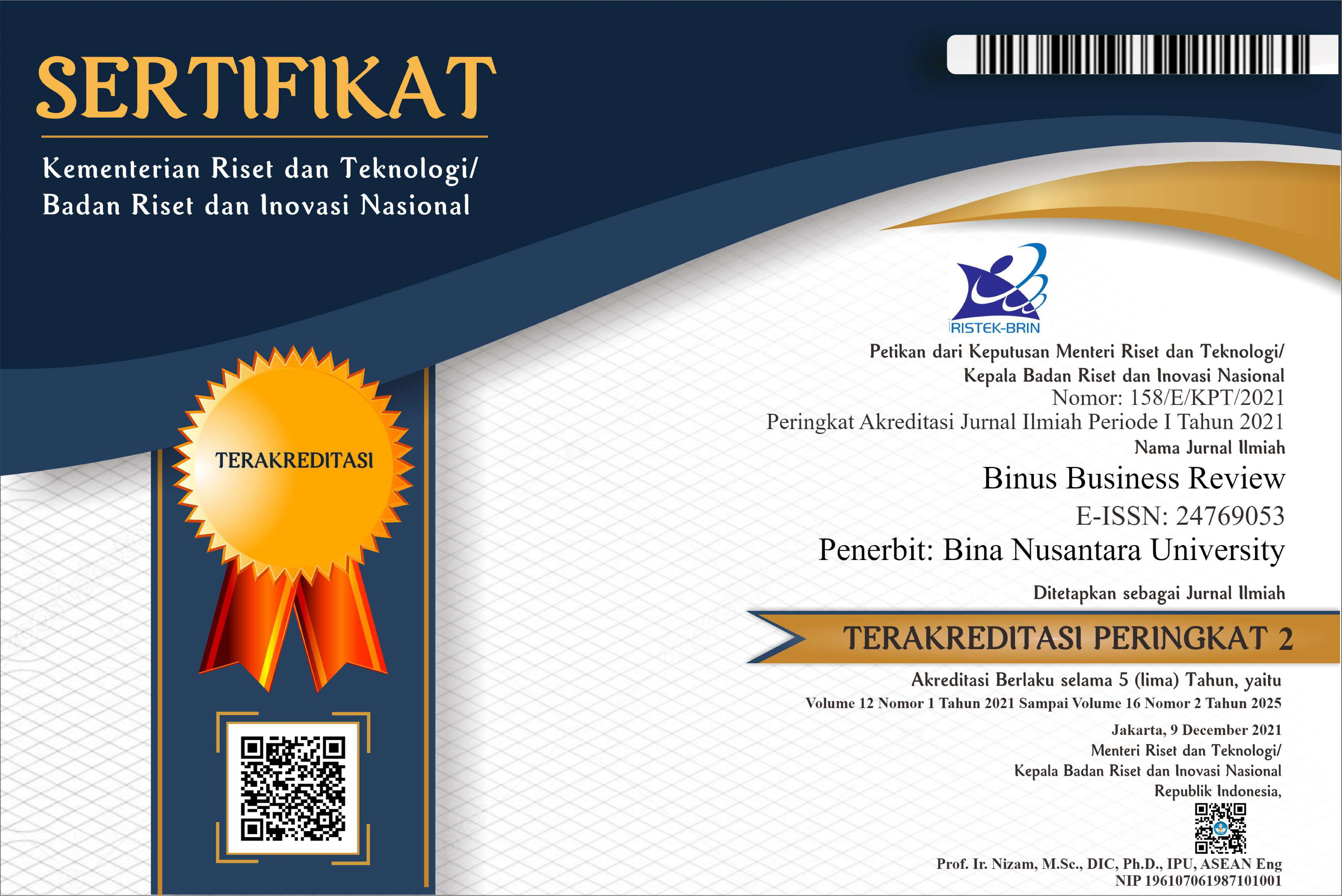The Effects of Financial Ratio and Market Based Ratio toward the Stock Price of Manufacturing Industry Sector in Indonesia Stock Exchange
DOI:
https://doi.org/10.21512/bbr.v6i3.953Keywords:
Indonesia Stock Exchange, manufacturing industry sector, financial ratioAbstract
The research objectives to examine the magnitude of the significant influence between financial ratios and the market based ratio toward the stock price of manufacturing industry sector in Indonesia Stock Exchange (IDX). In accordance IDX data by December 2013, the number of companies, included in the stock of the manufacturing industry sector, is 139 companies. Based on the analysis, it is concluded that the variable return on assets (ROA) and price to book value (PBV) has positive influence on stock prices. It can be interpreted that the higher the return on assets ratio and price to book value, the more positive influence on the increase of the stock price. The variable debt to equity ratio (DER) and price earnings ratio (PER) has negatively influence the stock price on the stock of manufacturing industry sector. This can be interpreted the higher the value of the debt to equity ratio and price earnings ratio, the more negatively influence on the decrease stock price.
Plum Analytics
References
Arista, D., Astohar. (2012). Analisis Faktor Faktor yang Mempengaruhi Return Saham. Jurnal Ilmu Manajemen dan Akuntansi Terapan. 3(1): 1-15.
Bursa Efek Indonesia. (2010). Buku Panduan Indeks Harga Saham Bursa Efek Indonesia. Jakarta: Bursa Efek Indonesia.
Bursa Efek Indonesia. (2013). IDX Statistics, edisi Desember 2013. Jakarta: Bursa Efek Indonesia
Darmadji, T., Hendy M. F. (2008). Pasar Modal di Indonesia Pendekatan Tanya Jawab. Edisi 2. Jakarta: Salemba Empat.
Harahap, S. S. (2002). Analisis Kritis Atas Laporan Keuangan. Jakarta: Raja Grasindo Persada.
Husnan, S. (2001). Dasar Dasar Teori Portofolio dan Analisis Sekuritas. Edisi 3. Yogyakarta: UPP AMP YKPN.
Jones, C. P. (2010). Investments Principles and Concepts. Asia: John Wiley & Sons.
Mohanty, P. (2002). Evidence of Size Effect on Stock Returns in India. Vikalpa Journal, 27(3): 27-37.
Rahmani, A., Sauber, S., Elnaz, T. (2006). Accounting Variables, Market Variables and Stock Return in Emerging Markets: Case of Iran. Faculty of Management & Accounting, Allameh Tabataba’i University, Teheran-Iran.
Ross, S., A., Randolph, W. W., Bradford, D. J., Joseph, L., Ruth, T. (2012). Fundamentals of Corporate Finance. Asia Global Edition. McGraw-Hill Companies Inc.
Sekaran, U. (2000). Research Methods For Business. USA: John Wiley & Sons Inc.
Susilowati, Y., Tri, T. (2011). Reaksi Signal Rasio Profitabilitas dan Rasio Solvabilitas Terhadap Return Saham Perusahaan. Jurnal Dinamika Keuangan dan Perbankan, 3(1): 17 – 37.
Tse, R. Y. C. (2002). Price-Earnings Ratios, Dividend Yields and Real Estate Stock Prices. Journal of Real Estate Portfolio Management, 8(2): 107-113.
Downloads
Published
Issue
Section
License
Authors who publish with this journal agree to the following terms:
a. Authors retain copyright and grant the journal right of first publication with the work simultaneously licensed under a Creative Commons Attribution License - Share Alike that allows others to share the work with an acknowledgment of the work's authorship and initial publication in this journal.
b. Authors are able to enter into separate, additional contractual arrangements for the non-exclusive distribution of the journal's published version of the work (e.g., post it to an institutional repository or publish it in a book), with an acknowledgment of its initial publication in this journal.
c. Authors are permitted and encouraged to post their work online (e.g., in institutional repositories or on their website) prior to and during the submission process, as it can lead to productive exchanges, as well as earlier and greater citation of published work.
USER RIGHTS
All articles published Open Access will be immediately and permanently free for everyone to read and download. We are continuously working with our author communities to select the best choice of license options, currently being defined for this journal as follows: Creative Commons Attribution-Share Alike (CC BY-SA)




















